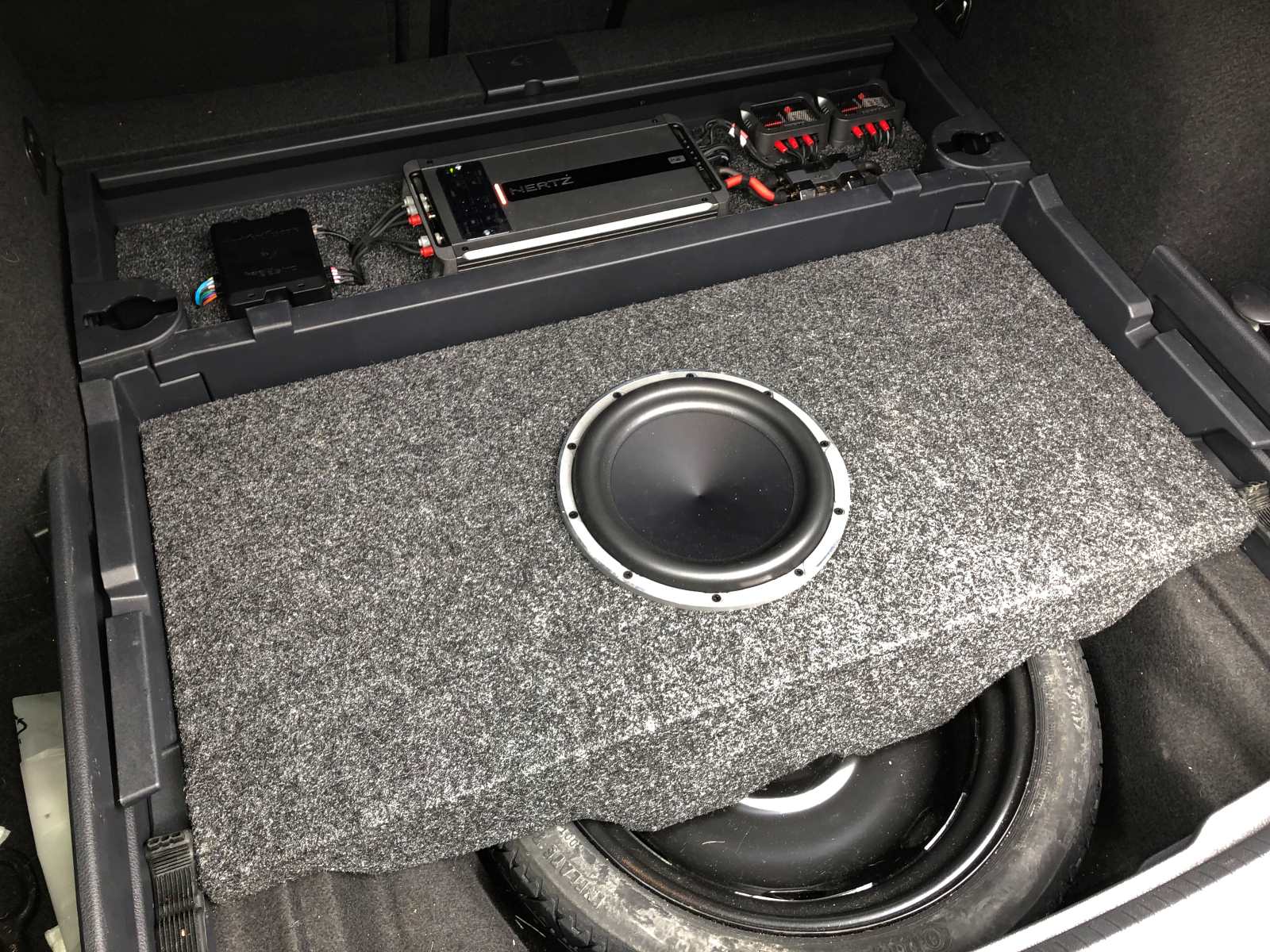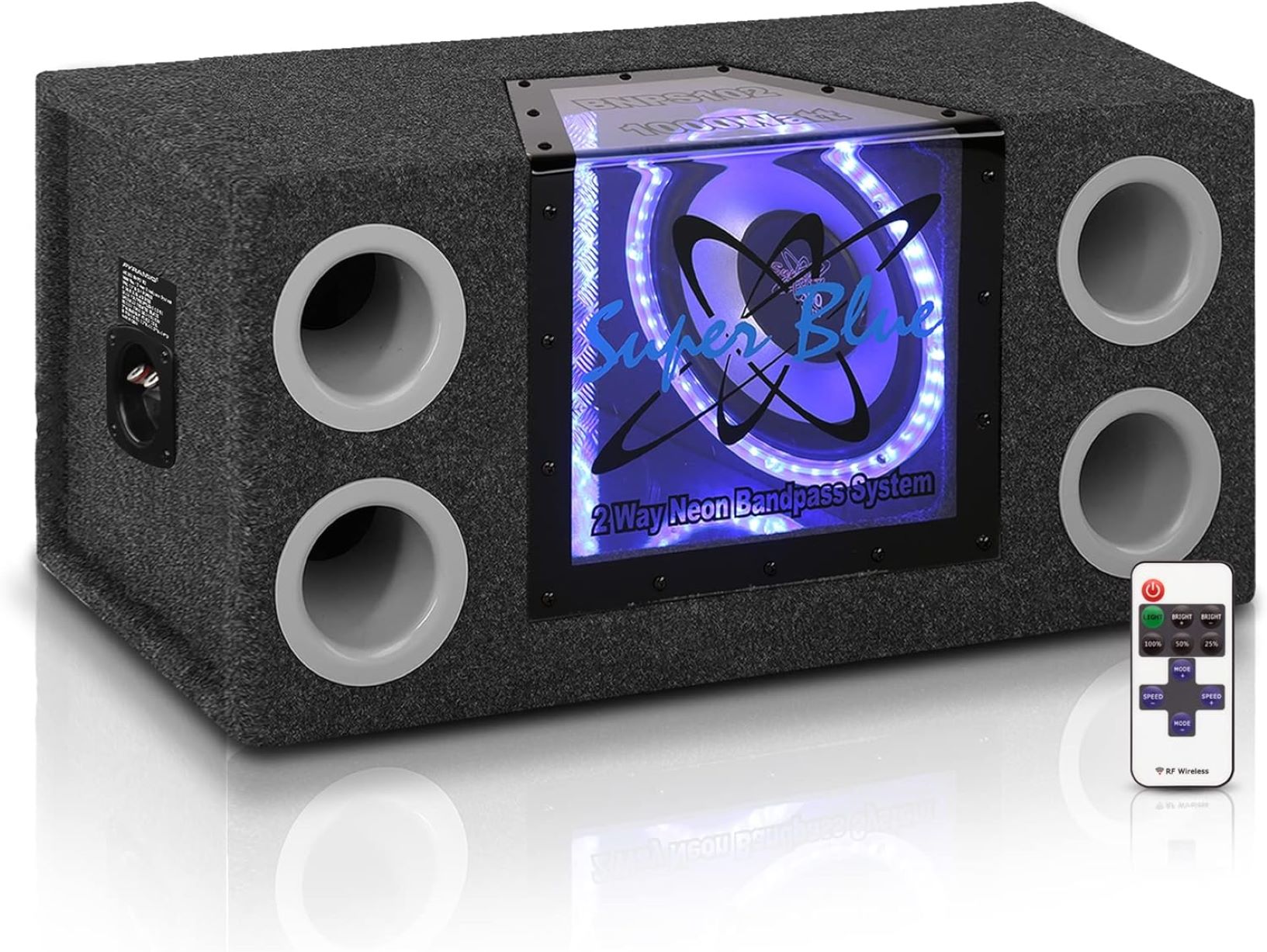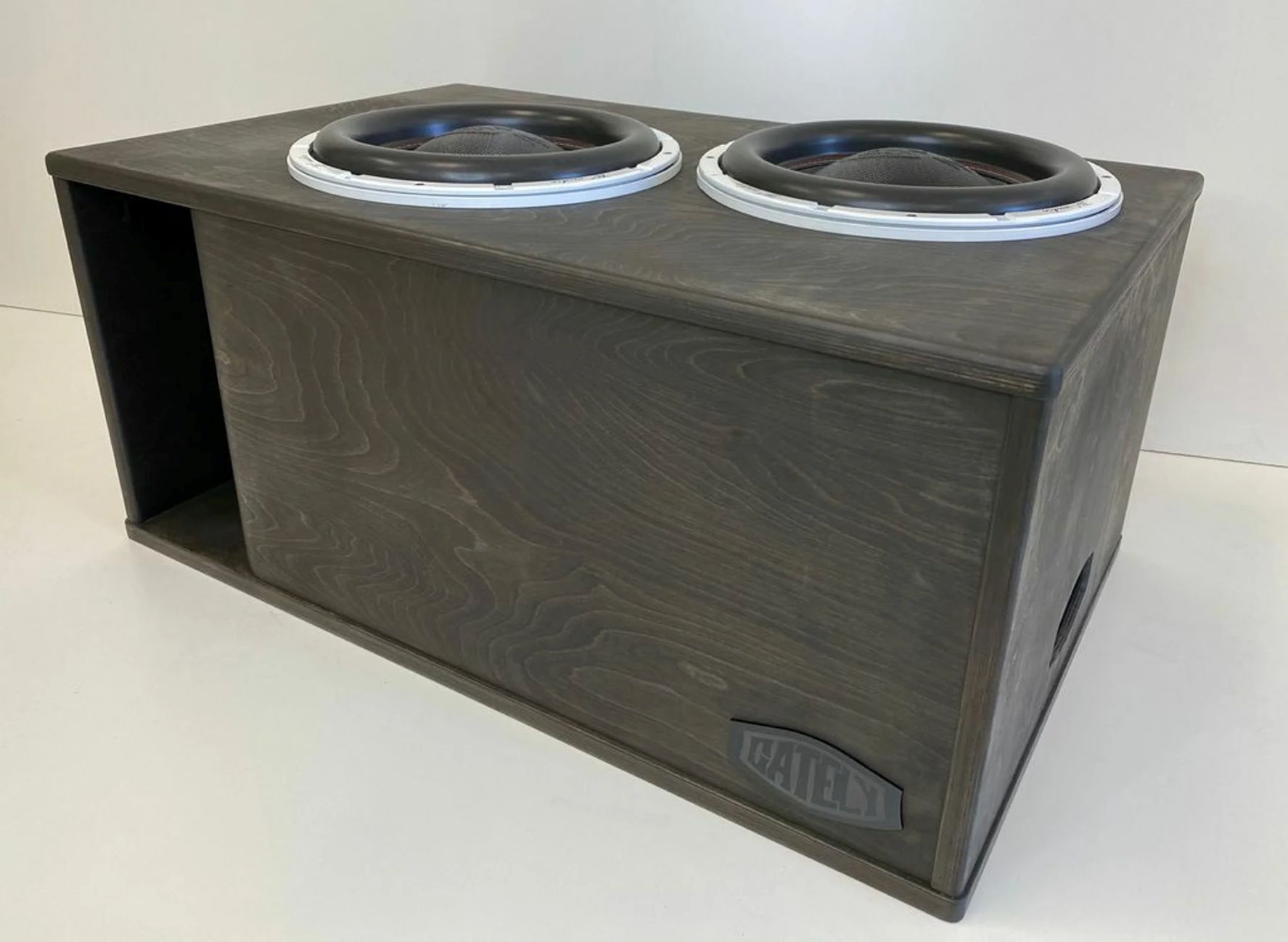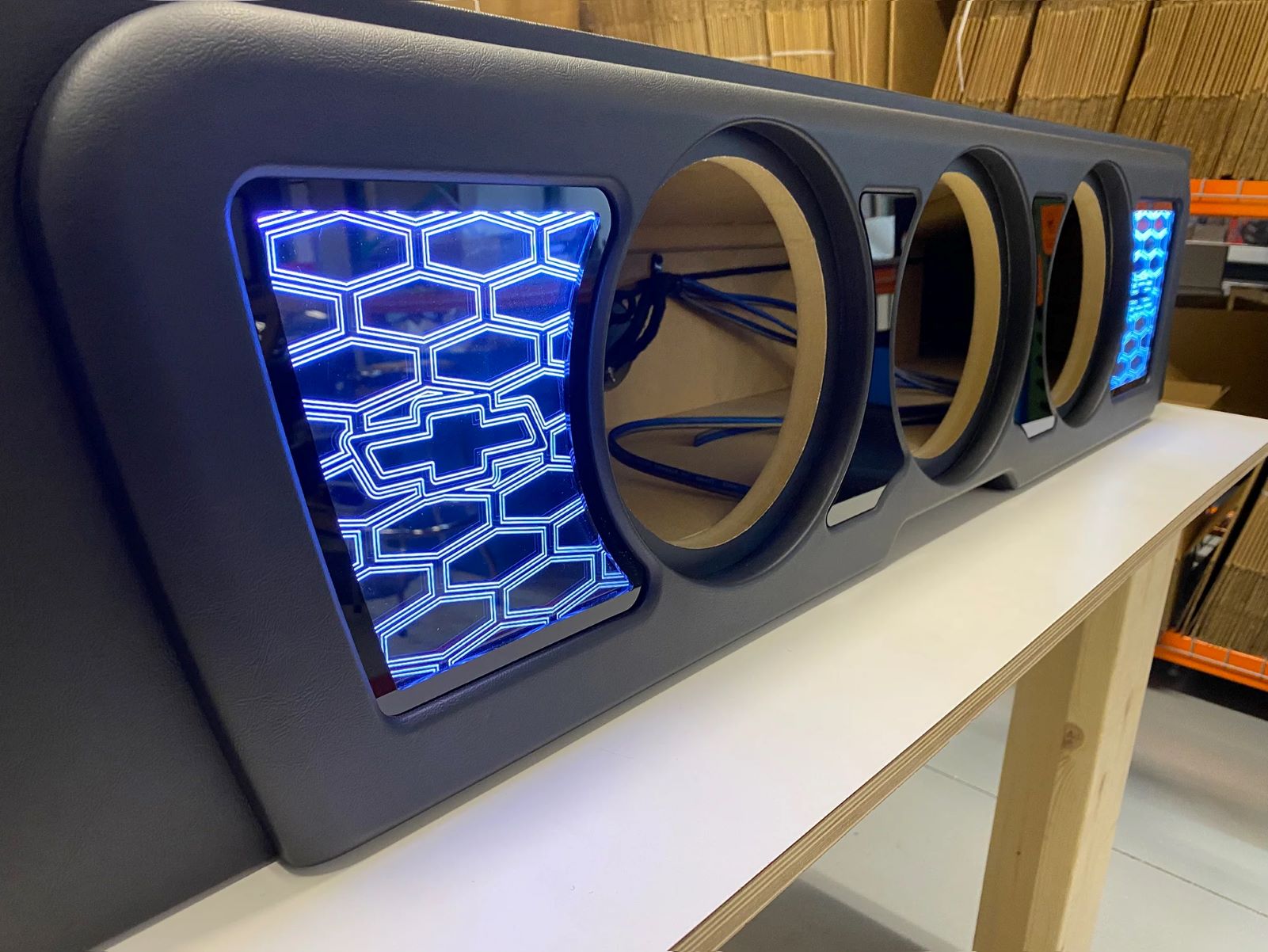Home>Devices & Equipment>Subwoofer>How To Keep Subwoofer Box From Sliding
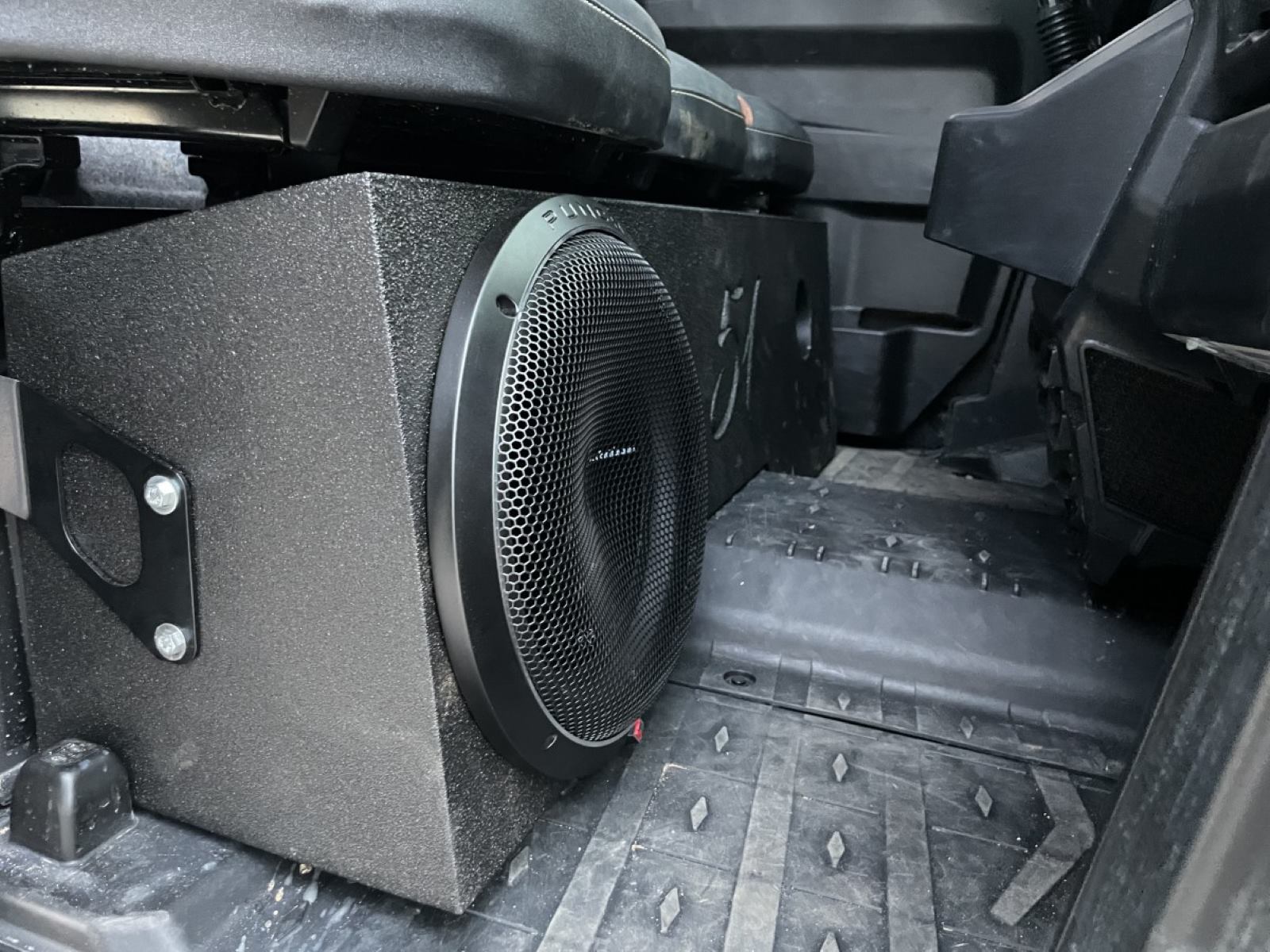

Subwoofer
How To Keep Subwoofer Box From Sliding
Published: January 22, 2024
Learn how to prevent your subwoofer box from sliding and ensure optimal sound quality in your car. Get expert tips and tricks to keep your subwoofer securely in place.
(Many of the links in this article redirect to a specific reviewed product. Your purchase of these products through affiliate links helps to generate commission for AudioLover.com, at no extra cost. Learn more)
Table of Contents
Introduction
Welcome to the world of deep, immersive bass with subwoofers. Whether you’re a music enthusiast, a home theater aficionado, or a car audio enthusiast, a subwoofer can take your audio experience to new heights. However, there’s one common challenge that many subwoofer owners face – the issue of the subwoofer box sliding around. This can be not only frustrating but can also distort the sound quality and potentially damage the subwoofer itself. In this article, we will explore various methods to keep your subwoofer box securely in place, ensuring optimal performance and enjoyment.
Before we dive into the anti-slip solutions, it’s important to assess the subwoofer box itself. The size, weight, and design of your subwoofer box can impact the stability and susceptibility to movement. Take a moment to inspect your subwoofer box and identify any potential areas where it may be prone to sliding. Understanding the specific challenges of your setup will help you choose the most effective solution.
Once you’ve assessed your subwoofer box, it’s time to prepare it for the anti-slip methods. This may involve cleaning the surface or making any necessary modifications to enhance the gripping capabilities. Ensuring a clean and well-prepared surface will optimize the effectiveness of the anti-slip solutions.
Now, let’s explore five effective methods to prevent your subwoofer box from sliding. These methods range from simple do-it-yourself solutions to commercial products that are readily available in the market. Choose the method that best suits your needs and budget, and enjoy a stable and immersive bass experience.
Assessing the Subwoofer Box
Before you can effectively prevent your subwoofer box from sliding, it’s essential to assess its characteristics. Understanding the size, weight, and design of your subwoofer box will help you determine the best course of action. Here are a few factors to consider:
- Size: The size of your subwoofer box can impact its stability. Larger boxes tend to have more surface area in contact with the floor or installation surface, providing better grip. Smaller boxes, on the other hand, may require additional measures to prevent sliding.
- Weight: Heavier subwoofer boxes are generally more stable and less prone to movement. If your subwoofer box is lightweight, it’s important to choose anti-slip solutions that can securely hold it in place.
- Design: The design of your subwoofer box may also contribute to its stability. Some boxes have built-in feet or rubber padding that helps prevent sliding. Others may have a flat bottom surface that requires additional measures to secure it.
Take the time to examine your subwoofer box and identify any potential areas where it may be prone to sliding. Look for any irregularities, such as uneven or slippery surfaces, that may compromise its stability. By understanding the specific challenges of your setup, you can choose the most suitable anti-slip solution.
Additionally, consider the location in which your subwoofer box is placed. Is it in a vehicle, a home theater room, or a music studio? Each environment may have unique characteristics that affect how the box interacts with the surface. For instance, a car subwoofer box may experience more vibrations and movement during driving, requiring a more robust anti-slip solution.
Once you’ve assessed your subwoofer box, you’re ready to prepare it for the anti-slip solutions. This may involve cleaning the surface or making any necessary modifications to enhance its gripping capabilities. By setting a solid foundation, you can ensure that the chosen anti-slip method works effectively to keep your subwoofer box in place.
Preparing the Subwoofer Box
Before implementing any anti-slip solution, it’s important to prepare your subwoofer box. Proper preparation ensures that the chosen method will adhere effectively and prevent any damage to your subwoofer box. Here are some steps to follow in preparing your subwoofer box:
- Clean the Surface: Begin by cleaning the surface of your subwoofer box. Remove any dust, dirt, or debris that may interfere with the adhesion of the anti-slip solution. Use a soft cloth and a mild cleaning solution to gently wipe down the surface. Allow it to dry completely before proceeding.
- Consider Surface Modifications: If your subwoofer box has a smooth or slippery surface, you may want to consider making modifications to enhance its gripping capabilities. For example, you can use sandpaper to roughen the surface slightly, creating more friction. Be mindful not to damage the box or compromise its structural integrity.
- Inspect Built-In Features: Some subwoofer boxes come with built-in features like feet or rubber padding to prevent sliding. Take a close look at these features and ensure they are in good condition. If they are worn or ineffective, consider using additional anti-slip solutions to reinforce stability.
By taking the time to properly prepare your subwoofer box, you ensure that the chosen anti-slip solution will adhere effectively and provide optimal stability. Remember, a clean and well-prepared surface is crucial for the success of any anti-slip method.
Anti-Slip Solutions
Now that you’ve assessed and prepared your subwoofer box, it’s time to explore various anti-slip solutions to keep it securely in place. Here are five effective methods to prevent your subwoofer box from sliding:
- Method 1: Velcro Strips: Velcro strips are a popular and versatile option for securing your subwoofer box. Attach one side of the Velcro strip to the bottom of the subwoofer box and the other side to the installation surface. The adhesive backing provides a strong grip, keeping the box in place. Make sure to choose heavy-duty Velcro strips that can handle the weight of your subwoofer box.
- Method 2: Rubber Feet: Rubber feet are another simple yet effective solution. Attach rubber feet to the bottom corners of your subwoofer box to create grip and stability. These feet absorb vibrations, reduce movement, and protect the box and the surface it sits on. Make sure to choose rubber feet that are suitable for your subwoofer box’s weight and size.
- Method 3: Non-Slip Mats: Non-slip mats are specifically designed to provide traction and prevent sliding. Cut a piece of non-slip matting to fit the bottom surface of your subwoofer box and place it in position. The textured surface of the mat will grip the installation surface, preventing any movement. Non-slip mats are easily available and durable, making them an excellent choice for securing your subwoofer box.
- Method 4: Grip Pads: Grip pads are adhesive pads with a textured surface that provides excellent grip. Simply stick the grip pads to the bottom of your subwoofer box and press it firmly onto the installation surface. The strong adhesive backing ensures a secure bond between the box and the surface. Grip pads are available in various sizes and thicknesses, allowing you to choose the most suitable option for your subwoofer box.
- Method 5: Sandbags: For larger subwoofer boxes or those located in vehicles, sandbags can be an effective anti-slip solution. Place sandbags on the corners or sides of the subwoofer box to add weight and stability. The added weight helps anchor the box, minimizing any sliding or movement. Ensure the sandbags are securely placed to prevent any damage to the subwoofer box.
Consider the specific characteristics of your subwoofer box and the installation environment when choosing the most suitable anti-slip solution. You may even combine multiple methods for added stability. Experiment with different options to find the one that works best for you, ensuring optimal performance and preventing any unwanted movement or damage to your subwoofer box.
Method 1: Velcro Strips
When it comes to securing your subwoofer box, Velcro strips offer a versatile and convenient solution. Velcro consists of two adhesive-backed strips: one with tiny hooks (the “hook” side) and the other with a looped surface (the “loop” side). Here’s how you can use Velcro strips to prevent your subwoofer box from sliding:
- Clean the Surfaces: Begin by cleaning the bottom surface of your subwoofer box and the installation surface. Remove any dirt or debris that may affect the adhesion of the Velcro.
- Measure and Cut: Cut Velcro strips to fit the dimensions of your subwoofer box. Ensure that the strips are long enough to provide sufficient grip and hold.
- Apply the Hook Side: Peel off the adhesive backing from the hook side of the Velcro strip and firmly press it onto the bottom of your subwoofer box. Make sure it adheres securely and evenly across the surface.
- Apply the Loop Side: Peel off the adhesive backing from the loop side of the Velcro strip and stick it onto the installation surface where you want your subwoofer box to be placed. Press it down firmly to ensure a strong bond.
- Align and Stick: Position your subwoofer box on the installation surface, aligning the Velcro strips. Press the box down firmly to engage the hook and loop surfaces, creating a secure connection.
- Test it Out: Give your subwoofer box a gentle push or shake to test its stability. If it stays firmly in place, you’ve successfully secured it with Velcro strips. If you notice any sliding or movement, double-check that the Velcro strips are properly aligned and adhered.
Velcro strips provide a strong and reliable grip, making them an excellent choice for securing your subwoofer box. They offer the added benefit of being easily removable and repositionable, allowing you to make adjustments as needed. Whether you’re using them in a car, home theater, or any other setting, Velcro strips can help ensure that your subwoofer box stays exactly where you want it.
Method 2: Rubber Feet
If you’re looking for a simple yet effective solution to prevent your subwoofer box from sliding, rubber feet are a popular choice. Rubber feet provide grip, stability, and vibration dampening, ensuring that your subwoofer box stays securely in place. Here’s how you can use rubber feet to secure your subwoofer box:
- Clean the Bottom Surface: Start by cleaning the bottom surface of your subwoofer box to remove any dust or debris. This will ensure a proper adhesion of the rubber feet.
- Determine the Number and Placement: Assess the size and weight of your subwoofer box to determine the number and placement of the rubber feet. Generally, four rubber feet in each corner of the box provide optimal stability.
- Mark the Placement: Use a pencil or marker to mark the spots where you will attach the rubber feet. Ensure that the markings are evenly spaced and align with the corners of your subwoofer box.
- Attach the Rubber Feet: Peel off the adhesive backing of the rubber feet and firmly press them onto the marked spots on the bottom of your subwoofer box. Apply pressure to ensure a strong bond between the rubber feet and the surface.
- Position the Subwoofer Box: Place your subwoofer box on the installation surface, making sure the rubber feet are in contact with the surface. Adjust the position if necessary to ensure a stable and balanced placement.
- Test for Stability: Give your subwoofer box a gentle shake to test its stability. The rubber feet should prevent any sliding or movement, providing a secure and immovable setup.
Rubber feet are an affordable and effective solution to keep your subwoofer box in place. They not only prevent sliding but also help dampen vibrations, enhancing the overall sound quality. When choosing rubber feet, make sure to select ones that are suitable for the weight and size of your subwoofer box. With rubber feet, you can enjoy your deep bass without the worry of your subwoofer box moving out of position.
Method 3: Non-Slip Mats
Non-slip mats are an excellent and versatile solution for keeping your subwoofer box securely in place. These mats provide a textured surface that grips both the bottom of your subwoofer box and the installation surface, preventing any sliding or movement. Here’s how you can use non-slip mats to secure your subwoofer box:
- Clean the Surfaces: Begin by cleaning the bottom surface of your subwoofer box and the installation surface. Remove any dust, dirt, or debris that may hinder the adhesion of the non-slip mat.
- Measure and Cut the Mat: Measure the size of your subwoofer box and cut a piece of non-slip matting to fit its dimensions. Ensure that the mat is slightly smaller than the box to avoid any overhang.
- Position the Mat: Place the cut non-slip matting onto the bottom surface of your subwoofer box. Make sure it is centered and covers the entire area that will come into contact with the installation surface.
- Align and Place the Subwoofer Box: Position your subwoofer box on the installation surface, aligning it with the desired placement. The non-slip mat will create a secure grip between the box and the surface, preventing any sliding.
- Test for Stability: Give your subwoofer box a gentle push or shake to test its stability. The non-slip mat should hold it securely in place, ensuring that it remains immovable during operation.
Non-slip mats are readily available and offer an affordable way to keep your subwoofer box stable. They are versatile and can be easily repositioned or removed as needed. Additionally, non-slip mats help minimize vibrations, preserving sound quality and reducing the risk of any damage to your subwoofer box. Whether you’re using them in a car audio setup or a home theater system, non-slip mats provide an effective grip to ensure your subwoofer box stays in place.
Method 4: Grip Pads
If you’re looking for a simple and reliable way to prevent your subwoofer box from sliding, grip pads are an excellent solution. These adhesive pads feature a textured surface that provides exceptional grip, ensuring that your subwoofer box stays securely in place. Here’s how you can use grip pads to secure your subwoofer box:
- Clean the Bottom Surface: Start by cleaning the bottom surface of your subwoofer box to remove any dust, dirt, or debris. A clean surface will allow the grip pads to adhere more effectively.
- Measure and Cut the Grip Pads: Measure the dimensions of your subwoofer box and cut grip pads to fit the bottom surface. Ensure that the grip pads cover the areas where the box will come into contact with the installation surface.
- Peel and Stick: Peel off the backing of the grip pads and firmly press them onto the bottom surface of your subwoofer box. Apply even pressure to ensure a strong adhesion between the pads and the box.
- Position the Subwoofer Box: Place your subwoofer box onto the installation surface, ensuring that the grip pads make contact with the surface. Adjust the position as needed to achieve a stable and balanced placement.
- Test for Stability: Give your subwoofer box a gentle shake or push to test its stability. The grip pads should prevent any sliding or movement, providing a secure and immovable setup.
Grip pads are a practical and effective solution for keeping your subwoofer box in place. They offer a strong grip and are designed to withstand the weight and vibrations associated with subwoofer systems. Grip pads are available in various sizes and thicknesses, allowing you to choose the most suitable option for your subwoofer box. With grip pads, you can enjoy your audio experience without worrying about your subwoofer box shifting or sliding.
Method 5: Sandbags
When it comes to securing larger subwoofer boxes or those located in vehicles, sandbags can be a reliable and effective anti-slip solution. The added weight of sandbags helps anchor the subwoofer box, minimizing any sliding or movement. Here’s how you can use sandbags to secure your subwoofer box:
- Select Suitable Sandbags: Choose sandbags that are appropriate for the weight and size of your subwoofer box. Ensure that the sandbags are clean and free from any leaks to avoid any potential mess or damage.
- Position the Sandbags: Strategically place the sandbags around the corners or sides of your subwoofer box. The weight of the sandbags will provide stability and prevent any unwanted movement.
- Secure the Sandbags: Depending on the design of your subwoofer box, you may want to secure the sandbags in place to ensure they don’t shift during operation. You can use bungee cords, straps, or even adhesive hook-and-loop fasteners to keep the sandbags securely positioned.
- Test for Stability: Give your subwoofer box a gentle shake or push to test its stability. The sandbags should keep the box anchored in place, minimizing any sliding or movement.
- Ensure Proper Weight Distribution: It’s important to distribute the weight of the sandbags evenly to maintain balance and stability. Adjust the position and number of sandbags as needed to achieve optimal weight distribution.
Sandbags offer a flexible and effective solution, especially for larger subwoofer boxes or those installed in moving vehicles. They are readily available and easily adjustable, allowing you to fine-tune the weight and stability of your setup. Sandbags not only prevent sliding but also help dampen vibrations, ensuring a more enjoyable and immersive bass experience.
Additional Tips for Securing the Subwoofer Box
While the methods mentioned above are effective in preventing your subwoofer box from sliding, here are some additional tips to further enhance the stability and protection of your setup:
- Optimize Box Placement: Choose a stable and level surface for placing your subwoofer box. Avoid placing it on uneven or inclined surfaces, as this can increase the risk of sliding. Additionally, consider the proximity of other objects or speakers that may cause vibrations.
- Use Cable Management: Secure any loose cables or wires connected to your subwoofer box. Excess cable movement or tangles can cause unintended pulling or shifting, potentially affecting the stability of your setup. Use cable ties or management systems to keep your cables organized and out of the way.
- Monitor Temperature and Humidity: Extreme temperature and humidity levels can affect the adhesive properties of the anti-slip solutions. Ensure that your subwoofer box is placed in an environment with stable conditions to maintain the effectiveness of the chosen method.
- Regularly Check and Reapply: Periodically inspect the condition of the anti-slip solution used to secure your subwoofer box. Over time, adhesives may weaken, or grip pads may wear out. If necessary, clean the surfaces and reapply the anti-slip method to ensure optimal stability.
- Consider Permanent Installations: If you have a fixed installation for your subwoofer box, such as in a home theater or studio, you may want to explore more permanent installation options. This can include mounting brackets, speaker stands, or custom-built enclosures. Consulting with professionals in audio or home theater installation can provide you with personalized recommendations.
By following these additional tips, you can further secure your subwoofer box and ensure a stable and reliable audio experience. Remember, each subwoofer setup is unique, so feel free to explore different combinations of methods to find what works best for you. With proper precautions and attention to detail, you can enjoy your subwoofer’s deep bass without any worries of it sliding or moving out of place.
Conclusion
Securing your subwoofer box is crucial for maintaining optimal performance and preventing any unwanted sliding or movement. By assessing the characteristics of your subwoofer box and understanding the specific challenges of your setup, you can choose the most suitable anti-slip solution.
Methods such as Velcro strips, rubber feet, non-slip mats, grip pads, and sandbags offer effective ways to keep your subwoofer box securely in place. Each method has its own advantages, so choose the one that aligns with your needs and preferences.
Remember to properly prepare your subwoofer box before implementing any anti-slip solution. Clean the surfaces, consider modifications, and inspect any built-in features to optimize the effectiveness of the chosen method.
Additionally, follow the tips for securing your subwoofer box, such as optimizing box placement, using cable management, monitoring temperature and humidity, regularly inspecting and reapplying the anti-slip method, and considering permanent installations for fixed setups.
With the right anti-slip solution and proper precautions, you can enjoy your subwoofer’s deep, immersive bass without the worry of it sliding or moving out of place. Enhance your audio experience and immerse yourself in the power of the subwoofer, knowing that it is securely anchored for optimal performance.



